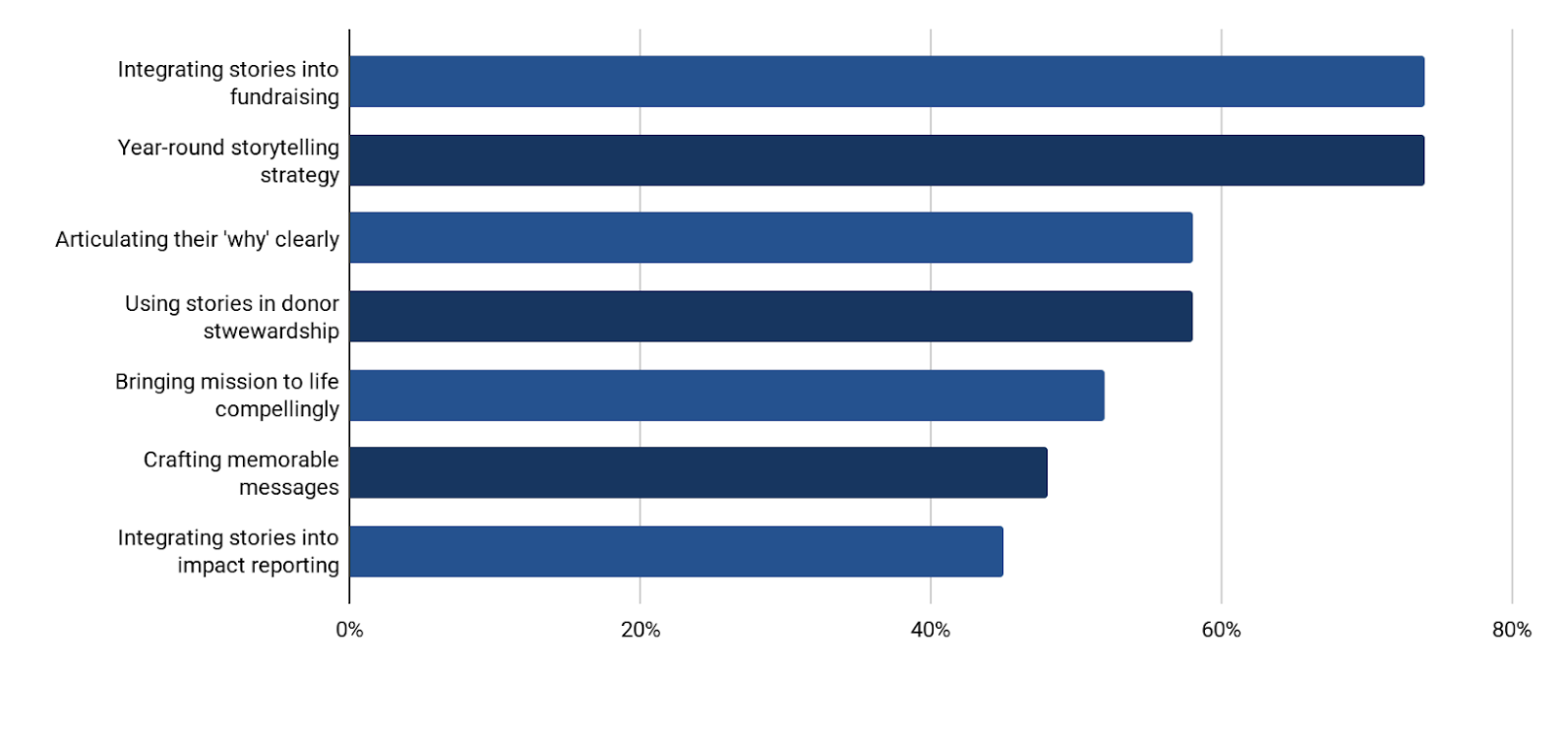Making Impact Visible: The Strategic Storytelling Support Nonprofits Need Most
Nonprofits work tirelessly to make the world a better place, serving their communities, raising vital funds, and reporting on impact. Yet in the midst of this hard work, many miss a key ingredient that could amplify their mission: storytelling. Without it, their commitment and impact can remain unseen and underappreciated.
To address this challenge, we designed a six-week Storytelling Mastery Series using proven frameworks and practical tools to help nonprofit leaders articulate their "why," craft memorable messages, bring their mission to life, and integrate stories into fundraising, reporting, and donor stewardship. Before the series began, we surveyed nonprofits to understand their current storytelling landscape. What emerged was a clear picture of the challenges facing today's social sector organizations—and compelling opportunities for meaningful capacity building support.
The Strategy Vacuum
When it comes to storytelling strategy, organizations are largely operating without clear direction. 39% admit they're "winging it" with no formal storytelling strategy, while 35% have something in place but acknowledge it's not clear or actionable. Only 16% report having a strategy they use consistently. This means three-quarters of organizations lack the strategic framework needed to tell their stories effectively—and many feel the weight of storytelling as another task rather than a powerful strategic tool.
Where Organizations Need the Most Help
Survey respondents identified specific areas they feel need the most attention within their organization, with striking consensus around key challenges:
The Barriers Standing in the Way
Beyond identifying needs, nonprofits articulated concrete obstacles preventing their stories from reaching and inspiring supporters. . Only 3% feel their supporters deeply understand and can articulate their impact. The most frequently cited barriers reveal systemic challenges:
Capacity and staffing constraints dominated responses, with multiple organizations citing "capacity," "time," and "bandwidth" as their primary challenges. Resource limitations emerged as another critical barrier, including "tiny marketing budget" and "time and resources."
Organizations also struggle with strategic clarity—not knowing what stories to tell, when to tell them, or how to tell them effectively. One respondent captured this perfectly: "Having the knowledge of what stories to tell, when, in a strategic way."
Reach and engagement present ongoing challenges as well, with organizations expressing difficulty "targeting the right people," achieving "broad reach," and ensuring content is "dynamic and engaging." Some face unique context-specific barriers, from the complexity of advocacy work to privacy concerns to "the debate between tokenizing and empowering."
How Targeted Support Can Bridge These Gaps
These findings reveal that storytelling challenges aren't merely about writing better stories—they're about building fundamental organizational capacity. The data reveals a critical insight: the majority of struggles center on translation and strategy—how to transform information into narrative and deploy it strategically—while secondary challenges focus on the craft of storytelling itself. The solution lies in providing structured, practical support that addresses both the strategic and tactical dimensions of storytelling. The most critical gaps where the majority of respondents need support:
Translate data into compelling narratives —building the systems and skills to bridge the gap between what they measure and what moves people.
Map stories to donor journeys —understanding where and when stories can most effectively move supporters.
Create year-round storytelling calendars —transforming storytelling from an ad-hoc activity into a sustainable strategic practice.
Articulate their "why" clearly —foundational skills that help organizations crystallize their identity and value proposition.
Build story-driven fundraising appeals —connecting narrative to revenue generation in practical ways.
Secondary but Still Significant Needs
Capacity building initiatives that provide these proven frameworks, practical tools, and structured guidance can help nonprofits move from "winging it" to implementing clear, actionable storytelling strategies. When organizations learn to integrate stories into fundraising, reporting, and donor stewardship with intention and consistency, they don't just tell better stories—they inspire supporters, strengthen relationships, and drive greater impact year-round. This is the path from invisibility to influence, from burden to strategic advantage.

